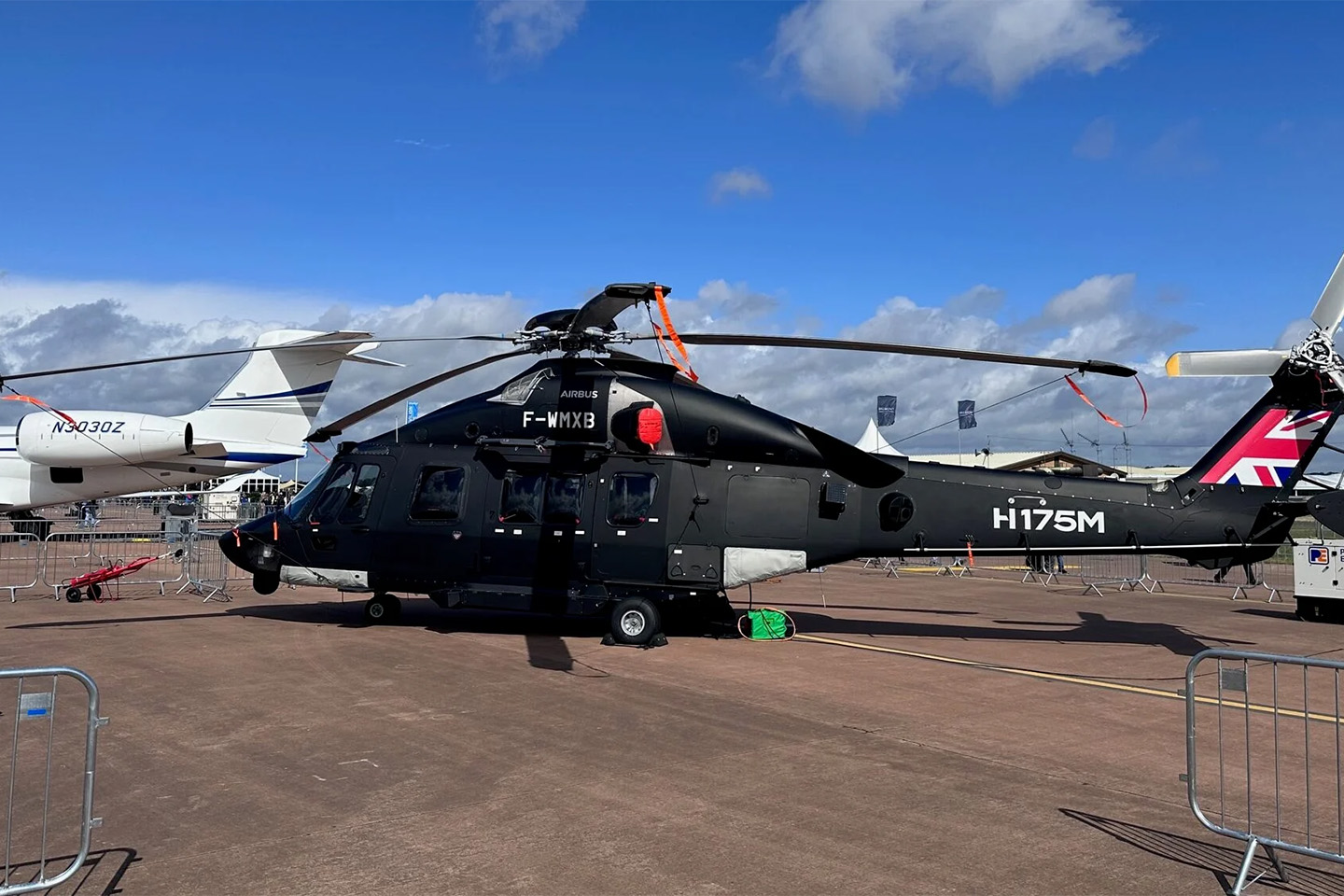Liga Asuransi – Dear risk takers, how are you? I hope your business is doing well.
Let’s continue the discussion about risk management and insurance. This time, we will be discussing helicopter risks and insurance.
If you are interested in this article, please share it with our friends so they can understand as you do.
Helicopter insurance is a specialized type designed to protect helicopter operators and owners from financial losses from various risks associated with helicopter operations. It provides a safety net in case of accidents, damage to the helicopter, liability claims, and other unforeseen events.
Helicopter insurance is vital for operators and owners for various reasons. It offers financial protection by compensating for accidents, damage, or theft—liability coverage safeguards against costly legal expenses arising from third-party claims. Compliance with regulations is ensured as insurance is often a legal requirement for helicopter operations.
Insurance encourages risk management and fosters a safety-oriented approach, promoting investment in safety measures and training. In case of significant losses, insurance aids business continuity. Customizable coverage allows tailored solutions for specific needs, providing peace of mind to operators and owners and allowing them to focus on core business activities. Helicopter insurance is a crucial risk management tool, safeguarding financial interests and ensuring long-term success.
THE RISKS OF HELICOPTER OPERATION
Helicopter operations are inherently risky due to the unique challenges they face in aviation. Here are some critical risks associated with helicopter operations:
- Accidents and Incidents
Helicopters are complex machines that operate in diverse environments, including urban areas, mountains, and remote locations. Accidents may occur due to mechanical failures, pilot error, adverse weather conditions, bird strikes, or mid-air collisions.
- Mechanical Failures
Helicopters rely on various mechanical systems that can experience malfunctions or failures, leading to potential accidents or incidents.
- Weather Conditions
Helicopters are susceptible to weather-related risks such as low visibility, strong winds, thunderstorms, icing, and turbulence. Operating in adverse weather conditions increases the likelihood of accidents.
- Low-Altitude Flying
Helicopters fly at low altitudes, making them more vulnerable to obstructions, power lines, and other obstacles less prevalent at higher altitudes.
- Pilot Skills and Human Error
The competency and judgment of the pilot play a significant role in the safe operation of a helicopter. Human errors, including fatigue and distraction, can lead to accidents.
- Theft and Vandalism
Helicopters are valuable assets and may be targets of theft or vandalism when parked or stored in less secure areas.
- Liability for Third-Party Claims
Helicopters can cause significant damage to property or injuries to people in the event of an accident. Operators may face costly liability claims from affected third parties.
- Search and Rescue Operations
Helicopters engaged in search and rescue missions may face additional risks due to their complex and unpredictable environments.
- Natural Disasters
Helicopters are often deployed in emergency response scenarios, such as firefighting, flood relief, or earthquake recovery. These operations expose them to additional risks associated with natural disasters.
- Ground Handling and Maintenance Risks
During ground operations, helicopters can be damaged due to mishandling or accidents, while improper maintenance can lead to mechanical failures.
- Unmanned Aerial Systems (UAS) Interference
The rise of unmanned aerial systems (drones) presents a new risk for helicopters, as unauthorized or reckless drone flights can pose collision hazards.
To mitigate these risks, helicopter operators must implement robust risk management strategies, adhere to safety protocols, conduct regular maintenance, invest in pilot training, and ensure comprehensive insurance coverage that addresses the specific risks associated with their operations. By proactively managing these risks, operators can enhance the safety and reliability of their helicopter operations.
THE IMPORTANCE OF RISK MANAGEMENT OF HELICOPTER OPERATION
Risk management is paramount in helicopter operations due to the inherently high level of risk involved in aviation, particularly in helicopter flights. Here are some key reasons why risk management is crucial for helicopter operations:
- Safety Enhancement
The primary objective of risk management in helicopter operations is to enhance safety. By identifying potential risks, assessing their impact, and implementing mitigation measures; operators can minimize the likelihood of accidents and incidents, safeguarding the lives of passengers, crew, and people on the ground.
- Protection of Assets
Helicopters are significant investments, and risk management ensures these assets are protected from damage, theft, or loss. Adequate insurance coverage, an integral part of risk management, provides financial protection against potential losses.
- Legal and Regulatory Compliance
Compliance with aviation regulations and safety standards is essential for helicopter operators. Risk management helps ensure operators meet these requirements, avoiding legal liabilities and potential sanctions.
- Operational Continuity
Effective risk management helps maintain operational continuity. By proactively addressing risks, operators reduce the chances of accidents that could disrupt their operations and lead to costly downtime.
- Reputation and Trust
Helicopter operators need to maintain a positive reputation in the industry to attract customers and maintain trust. A strong safety track record, which results from effective risk management, enhances the operator’s reputation and inspires stakeholder confidence.
- Financial Stability
Unforeseen incidents and accidents can have significant financial consequences. Risk management allows operators to plan for potential risks, budget for insurance premiums, and maintain financial stability in adverse events.
- Employee Well-being
Risk management protects passengers and customers and ensures the well-being of the helicopter crew and ground staff. By implementing safety protocols, providing training, and managing risks, operators prioritize the safety and health of their employees.
- Continuous Improvement
Risk management is an ongoing process that requires constant evaluation and improvement. By analyzing incidents and near-misses, operators can identify areas for improvement and make changes to prevent future occurrences.
- Emergency Preparedness
Risk management includes developing emergency response plans and procedures. Preparing for emergencies ensures the operator can respond promptly and effectively to unexpected situations.
- Industry Reputation
The aviation industry is closely interconnected, and helicopter accidents can impact the industry’s reputation. Effective risk management contributes to an overall safety culture and helps maintain the industry’s credibility.
THE UNIQUE RISK FACTORS SPECIFIC TO HELICOPTER OPERATION
Helicopter operations face several unique risk factors that differentiate them from fixed-wing aircraft. These risks stem from the operational characteristics of helicopters and the diverse environments in which they operate. Here are some critical unique risk factors specific to helicopter operations:
- Low-Altitude Flying
Helicopters frequently operate at low altitudes, particularly during take-off, landing, aerial surveys, crop dusting, and search and rescue missions.
Low-altitude flying increases the risk of collision with obstacles such as power lines, buildings, trees, and other structures, which can be challenging to detect and avoid.
- Weather Conditions
Helicopters are more susceptible to adverse weather conditions due to their slower speeds and reduced stability than fixed-wing aircraft.
Weather factors such as strong winds, low visibility, thunderstorms, icing, and turbulence can significantly impact helicopter operations and increase the risk of accidents.
- Pilot Skills and Human Error
The complexity of flying a helicopter requires highly skilled and experienced pilots.
Pilot errors, distractions, or lack of situational awareness can lead to accidents, especially during critical phases of flight, such as hovering, autorotation, and confined area landings.
- Mechanical Failures
Helicopters rely on numerous mechanical and hydraulic systems that need to function seamlessly for safe flight.
Mechanical failures, such as engine malfunctions or transmission issues, can result in rapid and unexpected emergencies, making autorotation training critical for helicopter pilots.
- Vibration and Fatigue
The nature of rotary-wing flight generates vibrations that can contribute to wear and tear on critical components, potentially leading to mechanical failures.
Pilots and crew members are also exposed to constant vibration during flight, which can lead to fatigue and impact decision-making abilities.
- External Load Operations
Helicopters often engage in external load operations, such as carrying equipment, cargo or conducting sling load missions.
Improper load management, turbulent conditions, or inadequate load securing can lead to instability or loss of control.
- Confined Area Landings
Helicopters can access confined and challenging landing areas, but these operations require precise piloting skills and a deep understanding of the aircraft’s performance capabilities.
Accidents may occur when pilots misjudge landing zones, leading to contact with obstacles or difficult take-offs.
- Night Operations
Night flying introduces additional risks, such as reduced visibility, difficulty identifying obstacles, and reliance on instruments and lighting systems.
- Wildlife Hazards
Helicopters operating in certain regions may encounter wildlife hazards, such as bird strikes, which can pose serious safety risks.
- Offshore Operations
Helicopters engaged in offshore operations for transport to and from offshore oil rigs, and platforms are exposed to maritime risks like overwater flights and adverse weather conditions over open water.
Effective risk management, thorough pilot training, proper maintenance, adherence to safety protocols, and advanced technology are essential for mitigating these unique risks and ensuring safe and successful helicopter operations.
HELICOPTER ACCIDENTS STATISTIC
Some historical statistics and case studies have highlighted the importance of managing risks in helicopter operations.
- Helicopter Accident Statistics
According to the U.S. National Transportation Safety Board (NTSB) data, from 2008 to 2018, there were an average of around 100 helicopter accidents annually in the United States. While this figure includes both fatal and non-fatal accidents, it underscores the need for risk management to prevent accidents and reduce their severity.
- 2. 2018 East River Helicopter Crash, New York City
On March 11, 2018, a sightseeing helicopter crashed into the East River in New York City, resulting in five fatalities and one survivor. The accident highlighted the importance of proper pilot training, emergency procedures, and the need for safety measures during low-altitude flights.
- 2019 Hawaii Helicopter Tour Accident
On December 26, 2019, a tragic accident occurred in Kailua, Hawaii, where a tour helicopter crashed, killing all seven people on board. The incident emphasized the significance of weather-related risks and the need for operators to monitor weather conditions and exercise caution during adverse weather closely.
- 2020 Australian Helicopter Collision
On January 29, 2020, two helicopters collided near the Sea World theme park in Gold Coast, Queensland, Australia, resulting in four fatalities and eight injuries. This accident raised concerns about proper air traffic management, collision avoidance, and pilot situational awareness.
TYPES OF HELICOPTER INSURANCE
Helicopter operators can obtain various types of insurance coverage to protect their assets, operations, and liabilities. Here are the key types of insurance coverage available for helicopter operators:
- Hull Insurance
Hull insurance provides coverage for physical damage to the helicopter itself. It protects the operator against financial losses resulting from accidents, collisions, fire, theft, and other physical perils that can cause damage or lead to the total loss of the helicopter.
The coverage amount is typically based on the helicopter’s market value or agreed-upon value at the time of policy issuance.
- Liability Insurance
Liability insurance is crucial for helicopter operators as it protects them from legal liabilities arising from bodily injury or property damage caused to third parties.
In accidents, liability insurance covers the operator’s legal defense costs and any judgments or settlements that may be awarded to affected parties.
- Passenger Liability Insurance
Passenger liability insurance specifically focuses on covering bodily injury or death of passengers onboard the helicopter during the flight.
This coverage is essential for operators who carry passengers, such as those providing aerial tours, transport services, or offshore operations.
- Crew Insurance
Crew insurance, also known as pilot liability insurance or aviation personnel insurance, provides coverage for bodily injury or death of the helicopter’s crew members, including pilots and other staff involved in the operation.
It is designed to protect the operator from potential liability claims and to provide financial support to the crew in the event of injuries or accidents during their duties.
- General Third-Party Liability Insurance
In addition to passenger and crew liability insurance, operators may opt for a broader general third-party liability insurance that covers liabilities to non-passenger third parties, such as pedestrians, property owners, or other individuals on the ground who may be affected by helicopter operations.
- Unmanned Aerial Systems (UAS) Insurance
Helicopter operators who use unmanned aerial systems (drones) for various tasks, such as surveying or monitoring, may also require separate UAS insurance to cover potential liabilities and physical damage involving drones.
THE INSURER’S CONSIDERATION FOR A HELICOPTER
When underwriting helicopter insurance policies, insurers carefully assess various factors to determine the risk associated with the helicopter operation. These factors help insurers set appropriate insurance premiums and coverage terms. Here are the key factors that insurers consider during the underwriting process:
- Operator’s Experience and Qualifications
Insurers evaluate the experience and qualifications of the helicopter operator. This includes the operator’s flight hours, type ratings, and additional training or certifications.
A well-experienced and highly qualified operator is generally considered a lower risk, as they are likelier to have the necessary skills to handle various flight scenarios safely.
- Helicopter Make and Model
The make and model of the helicopter are essential considerations. Helicopter models have varying safety records, performance capabilities, and maintenance requirements.
To assess its risk profile, insurers look at historical accident data and safety records associated with the specific make and model.
- Intended Use and Operations
The intended use of the helicopter is a critical factor. Some operations, such as aerial tours or emergency medical services, may pose different levels of risk compared to other uses, like agricultural spraying or offshore transport.
Insurers consider the nature of the operations, including the frequency of flights, the type of missions, and the locations in which the helicopter will be flown.
- Safety Record
The operator’s safety record is an essential factor in underwriting helicopter insurance. A good safety record indicates a commitment to risk management and safe operating practices.
Insurers may review the operator’s past accident and incident history, compliance with safety regulations, and any safety management systems in place.
- Claims History
Insurers assess the operator’s claims history to understand the frequency and severity of past insurance claims. A high claims history could result in higher premiums.
- Geographic Area of Operation
The geographic area where the helicopter will be operated is considered. Some locations may have higher risks due to adverse weather conditions, terrain, or air traffic density.
- Maintenance and Safety Protocols
Insurers evaluate the operator’s maintenance practices and safety protocols. Regular maintenance and adherence to industry safety standards indicate responsible and safe operations.
- Deductibles and Coverage Limits
The operator’s deductible amount and coverage limits can influence the insurance premium. Higher deductibles may lead to lower premiums but require the operator to bear more financial responsibility in case of a claim.
WHY FOR HELICOPTER INSURANCE YOU NEED AN INSURANCE BROKER?
Using an insurance broker for helicopter insurance is highly beneficial for several reasons:
- Expertise and Market Knowledge
Insurance brokers are experienced professionals with in-depth knowledge of the insurance industry and the specific needs of helicopter operators. They understand the complexities of helicopter insurance and can help navigate the market to find the most suitable coverage.
- Access to Multiple Insurers
Brokers have access to a vast network of insurance providers, including those specializing in aviation insurance. This allows them to obtain multiple quotes and compare different policies, ensuring you get the best coverage at competitive rates.
- Tailored Solutions
Insurance brokers work closely with helicopter operators to understand their unique risks, requirements, and budget constraints. They can customize insurance policies to match specific needs, ensuring you have comprehensive coverage that addresses your operation’s risks.
- Negotiation Power
Brokers have strong relationships with insurers and can negotiate on your behalf to secure favorable terms and conditions. They understand the intricacies of insurance contracts and can help you navigate the fine print.
- Risk Assessment and Analysis
Brokers perform thorough risk assessments to identify potential vulnerabilities in your operation. This analysis helps you implement risk management strategies and safety measures to minimize potential risks.
- Claims Assistance
In the unfortunate event of an incident, brokers act as your advocate during the claims process. They help you gather the necessary documentation, submit the claim, and negotiate fair settlements, ensuring a smoother and more efficient claims experience.
- Time and Resource Savings
Researching and obtaining insurance quotes can be time-consuming and complex. Utilizing an insurance broker saves time and resources, as they handle the entire process, allowing you to focus on your core business operations.
- Continuous Support
Insurance brokers provide ongoing support and advice throughout the policy term. They can help you review and adjust coverage as your needs change and update you on industry developments and regulations.
Overall, insurance brokers offer expertise, convenience, and personalized service that streamline the process of obtaining helicopter insurance and provide valuable support throughout the insurance lifecycle. Their role is to ensure you have the best coverage, manage risks effectively, and have peace of mind knowing your helicopter operation is adequately protected.
One of the leading insurance brokers in Indonesia that focus on helicopter insurance is L&G Insurance Broker.
For all your insurance needs in Indonesia, contact L&G insurance brokers now!
—
LOOKING FOR INSURANCE PRODUCTS? DON’T WASTE YOUR TIME AND CONTACT US RIGHT NOW
L&G HOTLINE 24 HOURS: 0811-8507-773 (CALL – WHATSAPP – SMS)
website: lngrisk.co.id
E-mail: customer.support@lngrisk.co.id
—















